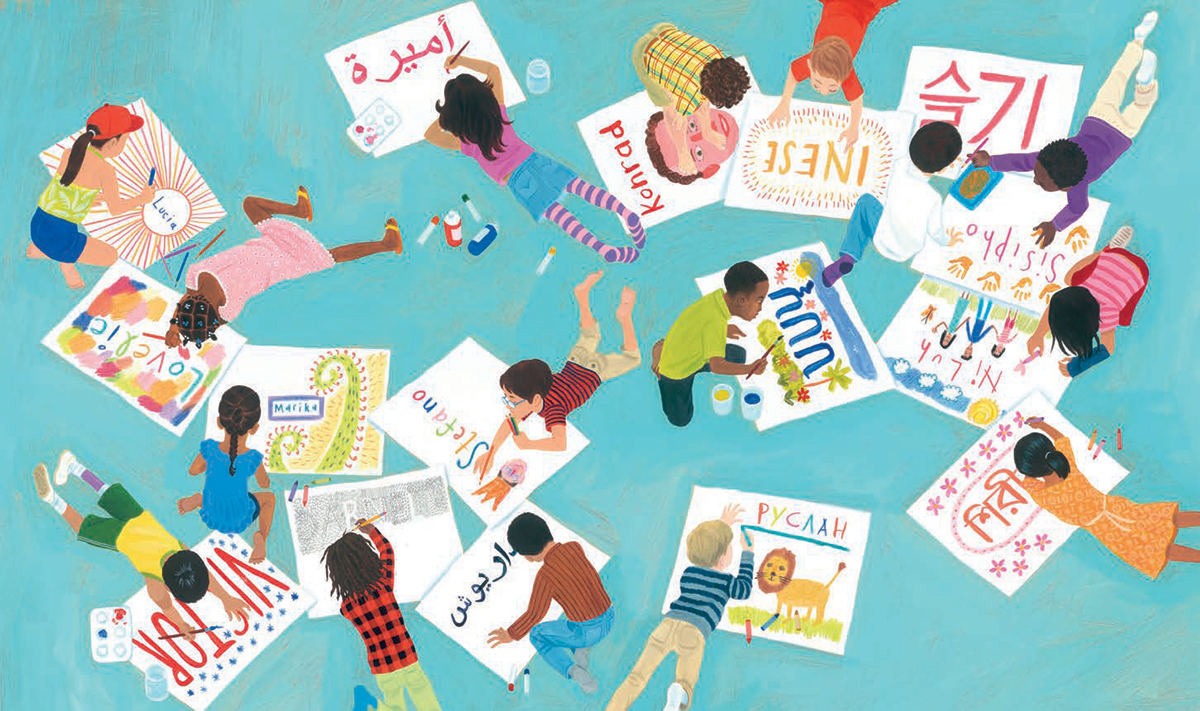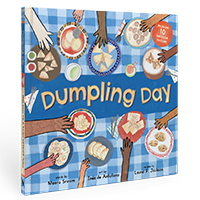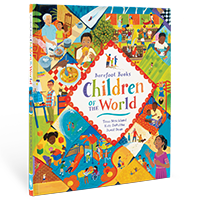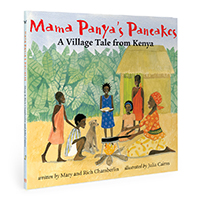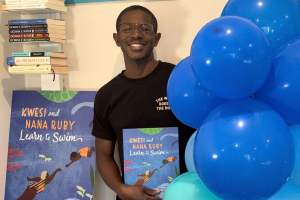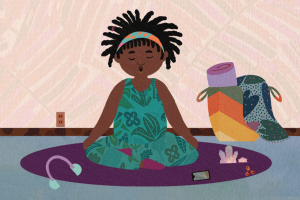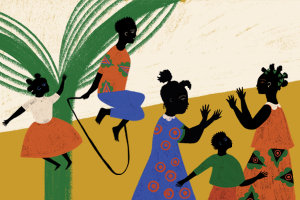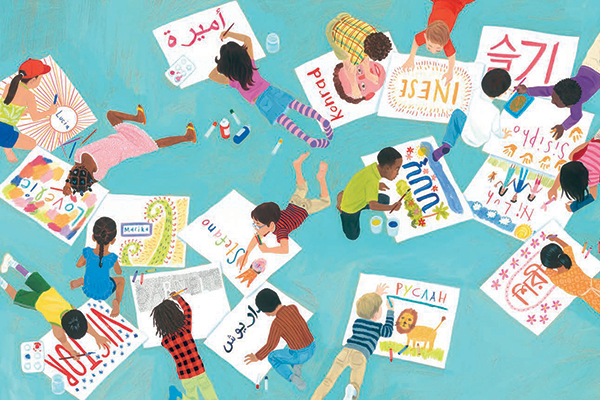

Below is a blog post originally posted on HiMama, written by Barefoot Book’s Director of Global Citizenship, Dr. Paula Laurel Jackson. She walks educators through the HEART method of empowering dual language students in the classroom.
Every child carries their own set of stories into their classroom.
These stories are their gifts; their assets: a combination of their heritage, culture, language and personal characteristics. At the moment, 22% of children in the United States are either bilingual or multilingual. This reality raises a number of questions and challenges for early childhood educators and parents alike.
There is concern among educators and parents that dual language learning could hinder children’s English learning development. However, there is a growing body of research suggesting that use of their primary language should be encouraged and considered a basis for their English learning. Validating and affirming the home language and culture can be an effective and meaningful way to meet children where they are, while encouraging them to master new skills (Walqui & van Lier, 2010).
Research further suggests that learning more than one language in the early years enhances brain development across social, emotional, and cognitive domains (García, Kleifgen, & Falchi, 2008). This is a critical window of opportunity.
Early childhood educators need to find ways to leverage their assets and help them to create a solid foundation from which they can learn, develop and positively engage with the world. As daunting as it may seem, especially when teachers do not speak the same language as their students, there are ways to create meaningful connections. Linda M. Espinosa and Elizabeth S. Magruder have identified strategies to create effective learning environments for dual (or multi-) language learners*. I implemented many of these strategies when I worked with pre-school children in Germany where more than half of the children spoke different languages. Here are five of my favorite strategies which, altogether, I call the HEART approach.
Honor their culture by conducting research to find out more about the child’s culture. You can do this online initially and later validate your findings by including family members of the child into your “cultural journey.”
Ask the family about the child’s life at home, such as what foods they like to eat, or what activities they enjoy. Ask them to share words from their language with the classroom. Learn frequently used words, such as the vocabulary for colors, emotions, greetings, or affirmative expressions, and incorporate them into the classroom by making signs or having them create drawings. Or simply allow them to share what they feel is important for you to know.
Engage and celebrate by creating a space where the student’s culture can be incorporated into the classroom. Weave the knowledge you have gathered from the family into your teaching through the use of words, pictures, drawings, music, signs and games. Engage all of the senses.
Create family circles and host family days when possible for show and tell. Family members can share elements of their culture for all to learn and enjoy.
Allow the children to bring in their favorite songs from their country for everyone to listen to, learn or dance to.
Food is a fun and delicious way to celebrate and create meaningful connections. You can talk about the various kinds of foods in different cultures. Or, bring in foods from the children’s cultures, or use books about foods to connect.
Dumpling Day, for example, features ten families from ten different cultures as they present their own version of dumplings. Dumpling is such a universal food, and nearly every culture has its own version.
Affirm and allow children to speak their language if they need to. When children feel as if they have to hide their language or culture, they can feel disempowered and undervalued, which will affect their learning and participation in the classroom.
Small group instruction is particularly important for dual language learners to feel confident. You can create smaller circles within the classroom for peers to learn together and from each other. You can have a “morning circle” where each child says hello in their own language. This is a great way to allow children to share what they know with the group.
Barefoot Books Children of the World depicts kids of a wide range of shapes, sizes, races, abilities and lifestyles from countries and cultures all over the world, and is a great way to initiate a round circle.
Read books that reflect their background. Representation matters. Books that represent their cultural heritage can be a powerful way to connect and engage. Ask your child to bring in their favorite book, and use that as a basis for discussion. This opportunity can be a window into a new experience for all the students and a moment of empowerment for the child whose culture is being shared.
I remember when I read Mama Panya’s Pancakes and my neighbor’s four-year-old daughter from Kenya grabbed the book and pointed to the pictures. She wore a huge smile, and told us the names of each market item in Swahili. The German and English children who were with us repeated the Swahili words and then shared their experiences of going to the market. It was a magical moment.
Take turns and be willing to shift roles. Allow the child to teach you. You can point to familiar objects around the classroom and ask the child to share the name for that object in their language. You can repeat what they are saying, and then say the name in English, allowing them to repeat. This “parrot game” can be a fun way to facilitate exchange and learn new words.
The main thing is to find ways to connect beyond the perceived boundaries of language, and to co-create spaces where your story and the story of your children can meet.
*Linda M. Espinosa and Elizabeth S. Magruder, “Practical and Proven Strategies for Teaching Young Dual Language Learners,” in Getting It Right for Young Children from Diverse Backgrounds: Applying Research to Improve Practice with a Focus on Dual Language Learners, ed. Linda M. Espinosa, 2nd ed. (Upper Saddle River, NJ: Pearson, 2015), 76–113.



